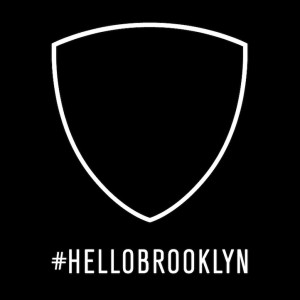Brands
So, How Long Will This #HashtagMarketingCraze Last?
In 2007, open standards advocate Chris Messina proposed a way of “improving contextualization, content filtering and exploratory serendipity within Twitter.” His suggestion was to incorporate hashtags to help track keywords for conversations within Twitter, a relatively low-key concept that had roots in vintage internet chat channels. The hashtag was eventually officially adopted by Twitter, then Instagram, Google+, Flickr, and now finally Facebook.
But hashtags have leaped off the internet, too, and can be seen on billboards, TV commercials, and other advertisements for everything from the latest Bravo reality show to Nike sneakers. Instead of giving their ad campaigns taglines or slogans, brands are giving them hashtags.
It might seem paradoxical: Offline, a hashtag can’t be clicked or searched or replied to. So why not separate the words out, erase the pound sign, and keep it traditional? Because, without saying it directly, a hashtag confirms ‘Yes, we are on Twitter,’ and ‘You can get in touch with us online.’ It says ‘We’re creating a conversation.’ By now, we all know that’s a smart move.

Take #HelloBrooklyn. The Nets, the flagging NBA team that recently moved from New Jersey to Brooklyn, chose the two words as a unifying point of publicity to signify their new home at the Barclays Center in downtown Brooklyn. Billboards around Brooklyn displayed the new logo and hashtag, and rapper Jay-Z — then a co-owner of the team — also got into the #HelloBrooklyn hashtag mania on his Life and Times site.
The Nets’ transition to Brooklyn marks a new era for the team, and in addition to the logo upgrade, their use of a hashtag reflects an understanding of their current environment. Search #HelloBrooklyn on Twitter, and you won’t find many Nets-pertinent tweets (instead, find out who’s recently moved to Park Slope!), but the hashtag, used in physical spaces, still reminds fans of the team’s new home as well as the space they occupy online.
GE’s recent TV commercials have included the hashtag #brilliantmachines in the final frame. Whether they’re talking about wind turbines or connected hospitals, the hashtag is inclusive of their entire product range, as well as unique enough so that a search on Twitter won’t reveal that thousands of Justin Bieber fans are also using the same hashtag for an unrelated reason. Using #brilliantmachines in their TV spots also reflects awareness of second-screen trends, since (as of 2012) between 75% and 85% of TV viewers use other devices while watching. If they see a hashtag on TV, it’s likely that the smartphone or tablet on which they can look it up and search it is right next to them.
But a hashtag is a volatile beast, easily commandeered by its users. Meant to encourage tales of heartfelt community, McDonald’s #McDStories turned into horror stories about fast food nightmares. “Within an hour, we saw that it wasn’t going as planned,” McDonald’s social media director Rick Wion told PaidContent. Similarly, Starbucks’ #spreadthecheer turned into a sarcastic slogan for ’bucks haters.
The bigger problem for brands, however, may not be the likelihood of the “hashtag fail” but the fact that outside of branded efforts, social media users are getting a little too liberal with hashtags. We all know the one person in an Instagram feed who, under a Sunday morning selfie, writes, #dress #church #yay #love #laugh and of course, the ubiquitous, ridiculous “#me.” When employed with abandon, hashtags lose their meaning. As Lou Dubois wrote for NBC News, “For certain things in life, hashtags make sense. TV shows, including big live events and advertising campaigns, fit in that category. The rest of what you’re doing and talking about… forget it. #Lunch? No. #Friday? No. #GreenBeans? No, no, no.”
And that’s important to note: The overuse of hashtags by ordinary Twitter users may within time seem like layering too many scrunchies on a ponytail in the ’90s, forever becoming a gimmicky symbol of the early 2010s. They’re useful to social media power users, for sure — take a look at how they’re used to filter Twitter into topical chat channels for scheduled conversations among professionals and enthusiasts of everything from nonprofits to wine — but that may not last in mainstream pop culture. Brands that engage in the same hashtag overkill may look decidedly unhip at some point in the future.
But for now, at least, a hashtag’s unique value is that it is alive. It can be clicked, viewed, and updated in real time. A brand can keep a hashtag while still letting its messaging evolve with the times and the conversation.
Anything that supersedes it in brand marketing will have to do all this — and more.
Image by ShutterstockGet better at your job right now.
Read our monthly newsletter to master content marketing. It’s made for marketers, creators, and everyone in between.




